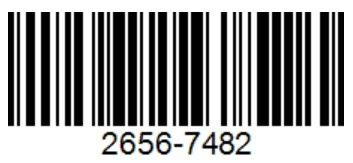EXPRESSION OF VITAMIN D RECEPTORS IN SKIN LESIONS AND PERILESION OF VITILIGO PATIENTS BASED ON IMMUNOHISTOCHEMICAL EXAMINATION
DOI:
https://doi.org/10.33820/mdvi.v50i2.414Keywords:
perilesi, reseptor vitamin D, vitamin D, vitiligo, lesiAbstract
AbstractIntroduction: Vitamin D is known to have many functions in the body, one of them is acts as an immunomodulator. This vitamin works through gene transcription of certain cells that express vitamin D receptors (VDR). Objective: To more understand the role of vitamin D in vitiligo based on RVD. Methods: This study using observational analytic study with cross-sectional method. The case group consisted of vitiligo patients whose skin was taken from the lesion area and perilesion through a plong biopsy procedure and stored as stored biologic material, while the control group were burn patients and chronic wounds from Plastic Surgery Outpatient, that underwent a split-thickness skin graft from the healthy skin. RVD expressions were examined by immunohistochemical using monoclonal antibodies and assessed by two reviewers. Results: The results showed that the mean VDR histoscore in the skin lesions of vitiligo (4.96 ± 1,852) was higher than controls (2.47 ± 0.405). The mean skin perilesion of vitiligo (5.07 ± 1,321) was higher than controls (2.47 ± 0.405). The mean histoscore of lesion was higher (4.96 ± 1,852) but was not statistically significant compared to perilesion vitiligo (5.07 ± 1,321). Conclusion: The expressions of RVD in perilesion vitiligo patients are lower than lesion. However, RVD expression of vitiligo patient was not lower than control group. This result shows that RVD plays little role in pathogenesis of vitiligo.
Downloads
References
2. Prakash D, Karthikeyan K. A case control study of vitamin D levels in patients with vitiligo. Int J Res Dermatol. 2017;3(1):103-6.
3. Bergqvist C, Ezzedine K. Vitiligo: A Review. Dermatology 2020;236:571–592
4. Khamissa RAG, Fourie J, Mostwaledi MH, Ballyram R, Lemmer J, Feller L. The Biological Activities of Vitamin D and Its Receptor in Relation to Calcium and Bone Homeostasis, Cancer, Immune and Cardiovascular Systems, Skin Biology, and Oral Health. BioMed Res Int. 2017:1-9.
5. Pasaribu DTM, Sutedja E, Dwiyana RF. Perbandingan kadar 25-hidroksivitamin D dalam serum pasien vitiligo sebelum dan setelah fototerapi narrowband UVB 311 nm serta korelasinya dengan perbaikan klinis. [Karya Ilmiah Akhir]. Bandung: Fakultas Kedokteran Universitas Padjadjaran. 2013. hlm. 1-105.
6. Varikasuyu SR, Aloori S, Varshney S, Bhongir AV. Decreased circulatory levels of vitamin D in Vitiligo: a meta- analysis. An Bras Dermatol. 2021; 96 (3);284-294.
7. Shaheryar K, Rizwan M, Sakina S. To determine the mean change in serum vitamin D levels in vitiligo patients undergoing NBUVB phototherapy. J. Pak. Assoc. Dermatol. 2019; 29(1):67-71.
8. Karagün E, Ergin C, Baysak S, Erden G, Aktas H, Ekis O. The role of serum vitamin D levels in vitiligo. Adv Dermatol Allergol. 2016; 34(4):300-2.
9. La Marra F, Stinco G, Buligan C, Chiriacò G, Serraino D, Di Loreto C,dkk. Immunohistochemical evaluation of vitamin D receptor (VDR) expression in cutaneous melanoma tissues and four VDR gene polymorphisms. Cancer Biol Med. 2017;14(2):162-175.
10. Adisa AO, Udeabor SE, Ogun GO, Orlowska A, Sader RA, Ghanaati. Immunohistochemical Expression of Vitamin-D Receptor in Oral and Skin Squamous Cell Carcinoma of a Black African Subpopulation. Med. J. Zambia. 2017;44(2): 64-8.
11. El-hanbuli, Hala M. Narrow-band UVB effects on cutaneous vitamin D receptor expression and serum 25-hydroxyvitamin D in generalized vitiligo. Photodermatology, photoimmunology & photomedicine. 2018; 3(34): 175-183 .
12. Doss RW, El-Rifaie AZ, Razhed LA, Vitamin D receptor expression in vitiligo. Indian J Dermatol. 2015;60(6):544-8.
13. Lee SM, Meyer MB, Benkusky NA, Obrien CA, Pike JW. The impact of VDR expression and regulation in vivo. J Steroid biochem Mol Biol. 2018; 177: 36-45.














